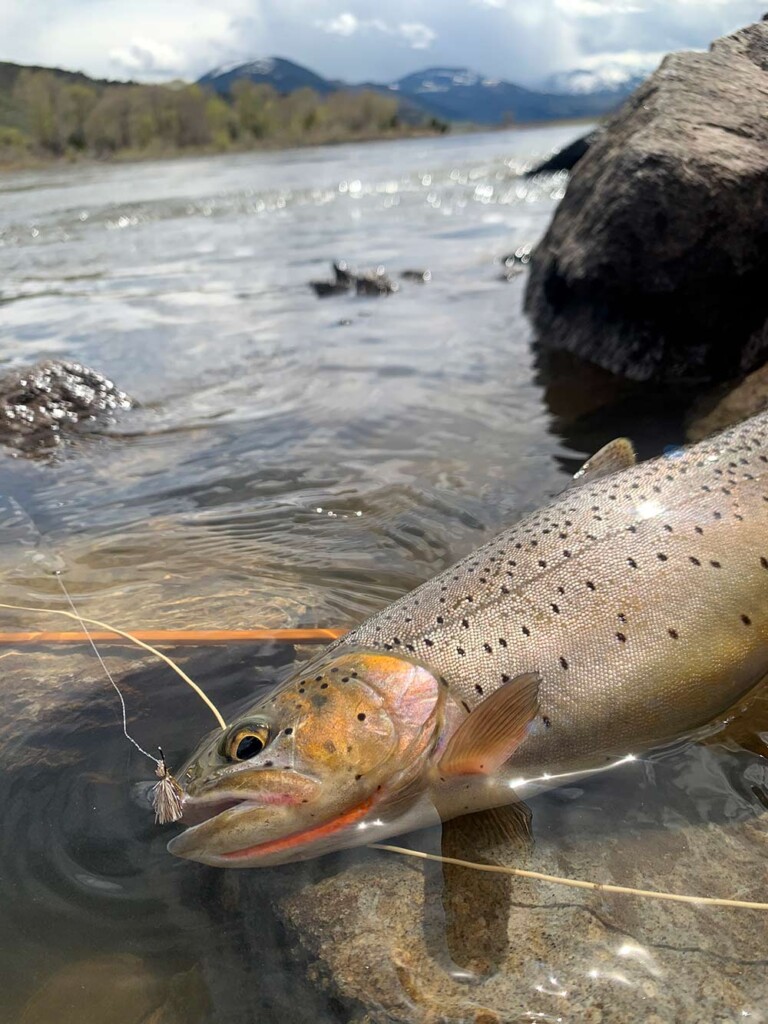Often viewed as the fish symbolic of the beauty of the American West, the cutthroat trout is one of the only native trout species in the Mountain Time Zone and is the most prevalent native trout. Easily identified by the striking streak of red along their jawline, cutthroat trout thrive in cold alpine streams and lakes along the Rocky Mountains but can be found as far west as the Pacific Ocean (Coastal Cutthroat Trout). In all, fourteen native strains of cutthroat live from Colorado to California, each with its unique markings and traits. Fly fishing for cutthroat trout, especially in Montana and Yellowstone National Park, is truly one of the most fulfilling ways to connect with the astounding beauty that exists in these places. Each river and the lake holds natural beauty and secrets reminiscent of those portrayed in Robert Redford’s 1992 film “A River Runs Through It”; when you do experience the wonders of catching a native cutthroat, though, be mindful to practice proper fish preservation techniques, as many of these species are endangered or threatened.

Cutthroat trout can be found in most states of the Pacific and Mountain Time zones and are the official state fish of seven; so, their habitat and habits vary dramatically across their native range. Mostly, cutthroat trout inhabit cool-flowing streams and high alpine lakes, as these are the waterways best suited to their survival. In states with large mountain ranges, it is not uncommon to find cutthroats living in lakes above treeline, with their habitat ranging up to nearly 13,000 feet of elevation. For the most part, cutthroat trout reach 8 to 14 inches when mature, but it is not unheard of for these fish to grow past 20” when their habitat allows for it. In fact, in 2020, an angler caught a 31-inch Yellowstone Cutthroat out of the Snake River in Idaho! There is also a saltwater-dwelling strain of cutthroat known as the Coastal Cutthroat that is native to the Pacific Ocean and coastal rivers from Northern California to the Kenai Peninsula in Alaska. These fish often spend most of their lives in the ocean and return to freshwater rivers to spawn, and can grow much larger than inland cutthroats. Generally, though, fishing for cutthroat trout will likely include targeting medium-sized but astounding beautiful fish with dry flies on an icy mountain stream or lake.
All cutthroat trout spawn in the spring, but the exact timing often depends on elevation and water temperature. The higher the trout lives, the later the water begins to warm up (or even unfreeze!), and the later the spawning season will occur. Thus, the spawning period for cutthroat trout can range anywhere from late March through mid-July. When cutthroat trout are spawning, it is best to leave them alone, because they will be in a vulnerable position trying to create more trout for our future angling enjoyment. Other times in the year, fly fishing for cutthroat can be an extremely productive and exhilarating endeavor. During the warm summer months, cutthroats are very willing to take dry flies on both alpine lakes and winding rivers. The harder the waterway is to access, the better the fishing will usually be, so don’t hesitate to do that long hike to a tucked-away lake or stream; just remember to bring a fishing partner and your bear spray if you’re hiking around Yellowstone or in Montana!